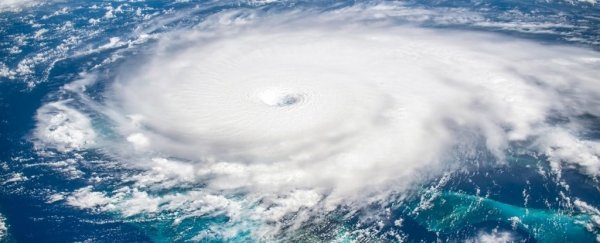Climate change is throwing Earth's water cycle severely out of whack. According to new satellite data, freshwaters are growing fresher and salt waters are growing saltier at an increasingly rapid rate all around the world. If this pattern continues, it will turbocharge rainstorms.
The findings indicate a severe acceleration of the global water cycle – a sign that isn't as clearly observed in direct salinity measurements from ocean buoys, which typically measure a little below the surface of the ocean. However, it's commonly predicted in climate models.
As global temperatures increase, climate scientists expect there will be greater evaporation on the ocean surface, which will make the top layer of the sea saltier and add moisture to the atmosphere.
This, in turn, will increase rainfall in other parts of the world, diluting some bodies of water to make them even less salty.
The pattern can basically be described as "wet-gets-wetter-dry-gets-drier", and it's a real cause for concern. If the water cycle accelerates with global warming, it could have profound impacts on modern society, driving drought and water shortages, as well as greater storms and flooding.
It might even have started speeding up snow melt, as rainfall has been increasing in polar regions.
"This higher amount of water circulating in the atmosphere could also explain the increase in rainfall that is being detected in some polar areas, where the fact that it is raining instead of snowing is speeding up the melting," explains Barcelona's Institute of Marine Sciences mathematician Estrella Olmedo.
In the far North and far South poles of our planet, there are fewer ocean buoys that directly measure surface salinity. The new satellite analysis is the first to provide a global perspective on the matter.
"Where the wind is no longer so strong, the surface water warms up, but does not exchange heat with the water below, allowing the surface to become more saline than the lower layers and enabling the effect of evaporation to be observed with satellite measurements," explains physicist Antonio Turiel from the Institut de Ciències del Mar in Spain.
"[T]his tells us that the atmosphere and the ocean interact in a stronger way than we imagined, with important consequences for the continental and polar areas."
Recent climate models predict that for every degree Celsius of warming, Earth's water cycle could intensify by up to 7 percent.
Practically, that means wet areas could grow 7 percent wetter and dry areas 7 percent drier on average.
Global satellite data now back up those predictions. In tropical and mid-latitude regions, researchers found significant differences between buoy measurements of salinity and satellite measurements of salinity.
The latter measurements more clearly showed changes in Earth's water cycle.
"Specifically, in the Pacific we have seen that surface salinity decreases more slowly than subsurface salinity and, in this same region, we have observed an increase in sea surface temperature and a decrease in the intensity of winds and the depth of the mixing layer," says Estrella Olmedo.
The authors argue that future ocean models should include satellite salinity data, as it seems to be a faithful proxy for global fluxes in evaporation and precipitation.
The only way to ensure heatwaves, droughts, and storms don't intensify in the future is to limit global warming – and there's plenty humanity can still do.
The world is already locked in to a certain amount of change. The most recent report from the International Panel on Climate Change estimates that if we can keep global warming to 2 °C, extreme weather events will be 14 percent stronger than they were at the start of the Industrial Revolution.
That's a concerning amount. In 2021, the United Nations warned the coming decades would likely bring a litany of catastrophic droughts. When nearly a quarter of the world is already experiencing water shortages, the consequences could be dire.
The study was published in Scientific Reports.
